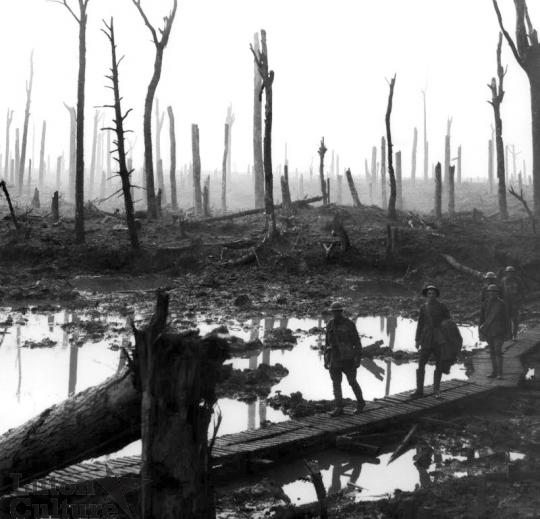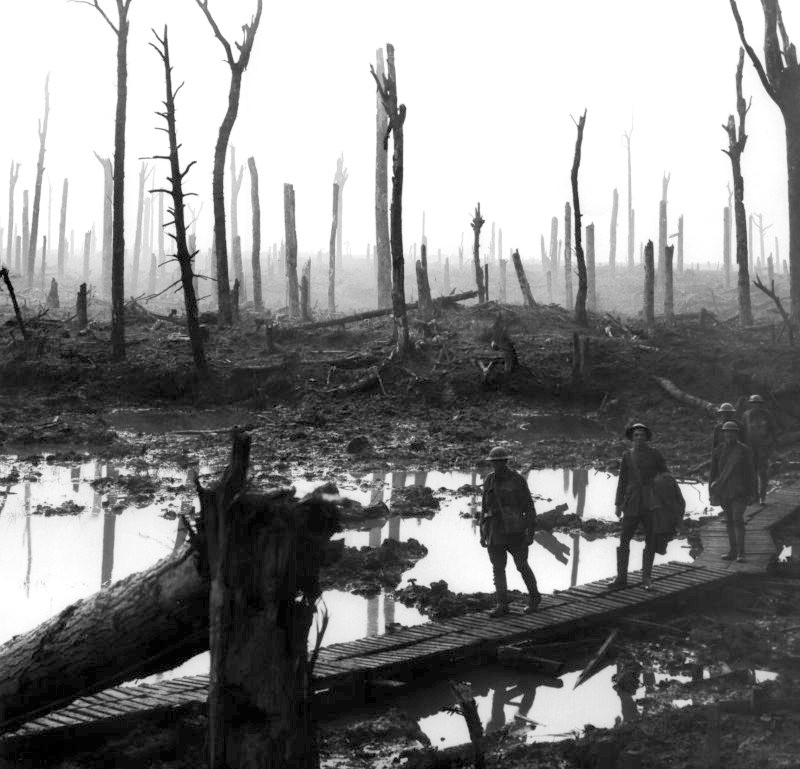Third Battle of Ypres (Passchendaele)
Event date
Classifications
Source
Source Date

The Battle of Passchendaele (or Third Battle of Ypres or "Passchendaele") was a campaign of the First World War, fought by the British and their allies against the German Empire. The battle took place on the Western Front, between July and November 1917, for control of the ridges south and east of the Belgian city of Ypres in West Flanders, as part of a strategy decided by the Allies at conferences in November 1916 and May 1917. Passchendaele lay on the last ridge east of Ypres, five miles from a railway junction at Roeselare, which was a vital part of the supply system of the German Fourth Army.
|
|||||||
| Belligerents | |||||||
|---|---|---|---|---|---|---|---|
Allies[Note 1] British Empire British Empire
|
 German Empire German Empire |
||||||
| Commanders and leaders | |||||||
 Douglas Haig Douglas Haig Hubert Gough Hubert Gough Herbert Plumer Herbert Plumer François Anthoine François Anthoine Louis Ruquoy Louis Ruquoy |
 Erich Ludendorff Erich Ludendorff Crown Prince Rupprecht of Bavaria Crown Prince Rupprecht of Bavaria Friedrich Sixt von Armin Friedrich Sixt von Armin |
||||||
| Strength | |||||||
| 50 British, 6 French divisions engaged for periods between 31 July and 10 November 1917 | 77–83 German divisions engaged for periods between 31 July and 10 November 1917 | ||||||
| Casualties and losses | |||||||
| Disputed 200,000 – 448,614 |
Disputed 217,000 – 410,000 including 24,065 prisoners. |
||||||
The next stage of the Allied strategy was an advance to Torhout–Couckelaere, to close the German-controlled railway running through Roeselare and Torhout, which did not take place until 1918. Further operations and a British supporting attack along the Belgian coast from Nieuwpoort, combined with an amphibious landing, were to have reached Bruges and then the Dutch frontier. The resistance of the German Fourth Army, unusually wet weather, the onset of winter and the diversion of British and French resources to Italy, following the Austro-German victory at the Battle of Caporetto (24 October – 19 November) allowed the Germans to avoid a general withdrawal, which had seemed inevitable to them in October. The campaign ended in November when the Canadian Corps captured Passchendaele. In 1918 the Battle of the Lys and the Fifth Battle of Ypres, were fought before the Allies occupied the Belgian coast and reached the Dutch frontier.
A campaign in Flanders was controversial in 1917 and has remained so. British Prime Minister Lloyd George opposed the offensive as did General Foch the French Chief of the General Staff. The British commander Field Marshal Sir Douglas Haig did not receive approval for the Flanders operation from the War Cabinet until 25 July. Matters of dispute by the participants and writers and historians since the war have included the wisdom of pursuing an offensive strategy in the wake of the failed Nivelle Offensive, rather than waiting for the arrival of the American armies in France; the choice of Flanders over areas further south or the Italian front; the climate and weather in Flanders; Haig's selection of General Hubert Gough and the Fifth Army to conduct the offensive; debates over the nature of the opening attack between advocates of shallow and deeper objectives; the passage of time between the Battle of Messines and the opening attack of the Battles of Ypres; the extent to which the internal troubles of the French armies motivated British persistence in the offensive; the effect of mud on operations; the decision to continue the offensive in October once the weather had broken and the human cost of the campaign on the soldiers of the German and British armies.
Event Place
Author: David









Add comment